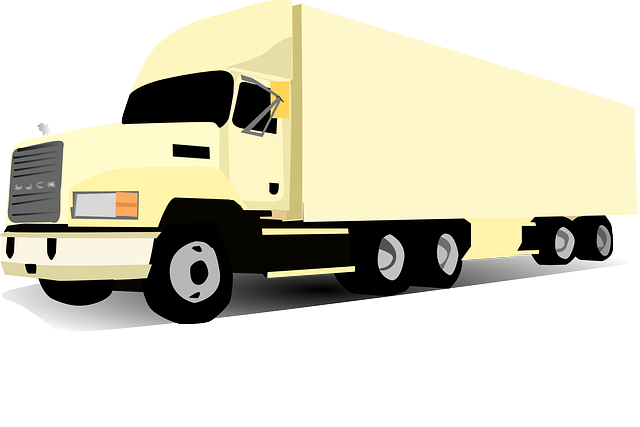Prioritizing safety in trucking businesses is a cost-saving strategy that attracts favorable attention from insurers, leading to lower trucking business insurance premiums. Implementing best practices like regular vehicle maintenance, driver training, and advanced fleet monitoring reduces risk exposure and accident rates. A data-driven approach using analytics and targeted corrective actions further enhances road safety and ensures competitive insurance rates while maintaining operational excellence.
In today’s competitive trucking industry, understanding how safety practices directly influence insurance costs is a game-changer. This article explores effective strategies to lower trucking business insurance premiums by leveraging comprehensive safety programs. From implementing robust risk management measures to fostering a culture of continuous improvement, these tactics not only enhance operational efficiency but also significantly reduce insurance expenses. Discover key steps to navigate the complexities of trucking business insurance and unlock substantial savings.
Understanding the Impact of Safety Practices on Insurance Costs

In the realm of trucking business insurance, safety practices play a pivotal role in determining premium costs. By adopting robust safety measures, companies can significantly reduce their exposure to risks and potential claims, which directly translates into lower insurance premiums. This relationship is rooted in the fundamental principle that insurers assess risk when calculating policy prices; the less risky a trucking operation appears, the more attractive it becomes to insurance providers.
Implementing best practices such as regular vehicle maintenance, driver training programs, and adherence to safety regulations not only enhances road safety but also communicates a commitment to risk management. As a result, insurance companies may offer substantial discounts or more favorable terms to businesses that demonstrate a strong safety culture. This approach not only saves money in the short term but also contributes to long-term financial stability by fostering a culture of safety and accountability within the trucking business.
Implementing Comprehensive Safety Programs for Trucking Businesses

For trucking businesses, implementing comprehensive safety programs is a strategic move that can significantly impact their trucking business insurance costs. By prioritizing safety, companies can reduce the risk of accidents and associated claims, making them more attractive to insurance providers. This proactive approach involves several key steps.
First, conducting regular driver training sessions on safety protocols and defensive driving techniques ensures that operators are equipped with the knowledge to navigate hazardous situations. Additionally, investing in modern fleet tracking technology enables real-time monitoring, allowing for swift response to unsafe behaviors and potential accidents. These measures, combined with a culture of open communication where drivers feel comfortable reporting concerns, create an environment that fosters safety and minimizes risks, ultimately lowering insurance premiums over time.
Key Safety Measures to Reduce Risks and Premiums

In the trucking business, safety is paramount not just for operational efficiency and employee well-being but also as a powerful tool to manage insurance costs. Implementing robust safety practices can significantly lower trucking business insurance premiums by reducing risk assessments from insurers. Key measures include regular vehicle maintenance to ensure all systems are in optimal condition, enhancing driver training programs to instill safe driving habits, and adopting advanced technologies like telematics for real-time monitoring of fleet performance. These proactive steps not only safeguard against accidents but also demonstrate a commitment to safety, leading to more competitive insurance rates.
Additionally, establishing a comprehensive risk management program, which includes thorough incident reporting and analysis, can identify recurring hazards and implement targeted mitigation strategies. Investing in well-maintained facilities, secure cargo handling procedures, and emergency preparedness plans further strengthens safety protocols. By embracing these safety measures, trucking businesses can enjoy not only enhanced operational resilience but also substantial savings on their insurance premiums.
Strategies for Continuous Improvement and Savings in Trucking Business Insurance

In the competitive trucking industry, continuous improvement is key to staying ahead and reducing costs, including insurance premiums for trucking business insurance. Implementing a culture of safety and efficiency can significantly impact bottom lines. One effective strategy is adopting a data-driven approach, utilizing advanced analytics to identify areas for improvement. By analyzing historical claims data, businesses can pinpoint risky behaviors or operations and take targeted corrective actions. For instance, understanding accident patterns might lead to refining driver training programs, implementing new safety technologies, or optimizing vehicle maintenance routines. These proactive measures not only enhance road safety but also lower the risk of costly insurance claims.
Additionally, fostering a safety-conscious mindset among employees is vital. Regular safety meetings, comprehensive training sessions, and open communication channels ensure that every trucker understands their role in preventing accidents. Encouraging feedback from drivers can reveal unique insights into potential hazards and innovative solutions. Moreover, staying updated with industry regulations and best practices guarantees compliance, reducing the risk of penalties and claims. By continuously refining safety protocols and promoting a culture of vigilance, trucking businesses can achieve substantial savings on their insurance premiums while maintaining high standards of operation.
By adopting robust safety practices, trucking businesses can significantly lower their insurance premiums while enhancing operational efficiency. Implementing comprehensive programs, focusing on key risk reduction measures, and embracing continuous improvement strategies enable not only cost savings but also contribute to a safer working environment. Investing in these practices is a win-win for both businesses and the industry as a whole, ensuring long-term sustainability and financial stability in trucking business insurance.
